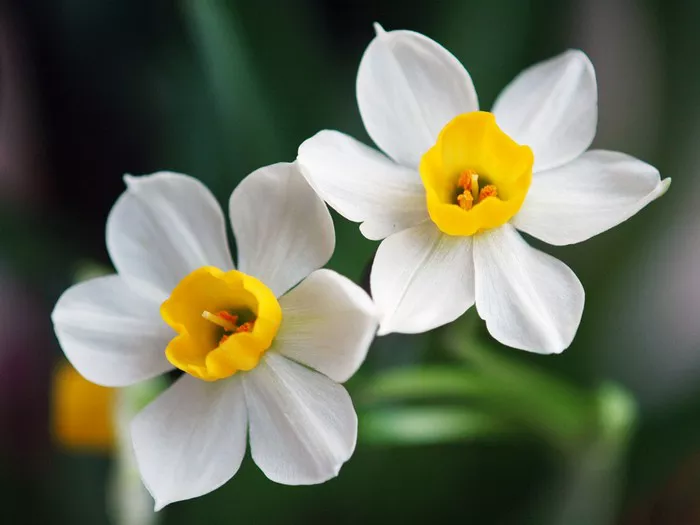Daffodils, with their vibrant colors and delicate petals, are a quintessential symbol of spring. As ephemeral as they may seem, there are several techniques available to preserve these stunning flowers, allowing you to enjoy their beauty long after they have been picked. Whether you wish to create dried arrangements, press them for crafts, or simply extend their vase life, this guide will provide you with all the knowledge you need to preserve daffodils effectively.
Understanding Daffodils: A Brief Introduction
Before delving into preservation methods, it’s essential to understand the structure and characteristics of daffodils. Daffodils belong to the genus Narcissus and are native to Europe and North Africa. They typically feature a trumpet-shaped central corona surrounded by six petals known as tepals. Daffodils come in various colors, including yellow, white, orange, and pink, with numerous hybrid varieties available.
Choosing the Right Daffodils for Preservation
Selecting the appropriate daffodils for preservation is crucial to achieving optimal results. Look for flowers that are at their peak bloom, with vibrant colors and firm stems. Avoid flowers that are wilted, damaged, or showing signs of decay, as these may not preserve well.
Methods of Daffodil Preservation
There are several methods available for preserving daffodils, each suited to different purposes and preferences. The most common preservation techniques include drying, pressing, and using floral preservatives for fresh arrangements.
1. Drying Daffodils
Drying daffodils is a popular method for preserving their beauty, allowing you to create long-lasting arrangements and crafts. There are two primary techniques for drying daffodils: air drying and silica gel drying.
Air Drying:
- Gather a bunch of daffodils and remove any excess foliage from the stems.
- Secure the stems together with a rubber band or twine, creating a bouquet.
- Hang the bouquet upside down in a dry, well-ventilated area away from direct sunlight.
- Allow the daffodils to dry completely, which may take one to two weeks depending on environmental conditions.
- Once dry, the daffodils can be used in arrangements, wreaths, or other crafts.
Silica Gel Drying:
- Fill a container with silica gel, a desiccant commonly used for drying flowers.
- Trim the stems of the daffodils to the desired length and remove excess foliage.
- Place the daffodils in the container, ensuring they are fully submerged in the silica gel.
- Seal the container and allow the daffodils to dry for several days to a week, depending on the thickness of the petals.
- Once dry, carefully remove the daffodils from the silica gel and brush off any excess.
2. Pressing Daffodils
Pressing daffodils is another method for preserving their delicate beauty, ideal for creating pressed flower arrangements, cards, and other crafts. To press daffodils, follow these steps:
- Select fresh daffodils with flat petals and vibrant colors.
- Carefully remove the flowers from the stems, ensuring they are free from any moisture.
- Place the daffodils between sheets of absorbent paper, such as blotting paper or parchment paper.
- Arrange the flowers in a single layer, making sure they are not touching each other.
- Place heavy books or a flower press on top of the paper to flatten the daffodils.
- Leave the daffodils to press for several weeks, checking periodically to ensure they are drying properly.
- Once fully pressed and dried, the daffodils can be used in various crafts and decorative projects.
3. Using Floral Preservatives for Fresh Arrangements
If you prefer to enjoy daffodils in fresh arrangements, using floral preservatives can help extend their vase life. Floral preservatives contain ingredients that nourish the flowers, inhibit bacterial growth, and prolong their freshness. To use floral preservatives with daffodils, follow these steps:
- Fill a clean vase with lukewarm water and add the recommended amount of floral preservative.
- Trim the stems of the daffodils at an angle, removing any foliage that will be submerged in water.
- Place the daffodils in the vase, ensuring they are evenly distributed and not overcrowded.
- Display the vase in a cool, well-lit area away from direct sunlight and drafts.
- Change the water and floral preservative every few days to maintain the freshness of the daffodils.
Tips for Preserving Daffodils
Regardless of the preservation method you choose, there are some general tips to keep in mind to ensure the best results:
- Harvest daffodils early in the morning when they are fully hydrated.
- Use sharp scissors or pruning shears to cut the stems at an angle, allowing for better water absorption.
- Remove any foliage that will be submerged in water to prevent bacterial growth.
- Avoid placing daffodils near fruits or vegetables, as they produce ethylene gas, which can hasten the aging process of flowers.
- Store dried or pressed daffodils in a cool, dry place away from direct sunlight to prevent fading.
Conclusion
Preserving daffodils allows you to enjoy their beauty long after they have finished blooming in the garden. Whether you choose to dry them for arrangements, press them for crafts, or keep them fresh in vases, there are several effective methods available. By following the techniques outlined in this guide and incorporating the provided tips, you can preserve the splendor of daffodils and add a touch of spring to your home year-round.


